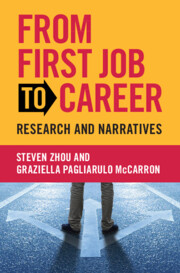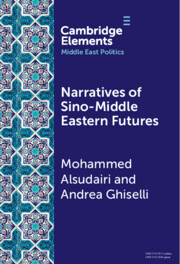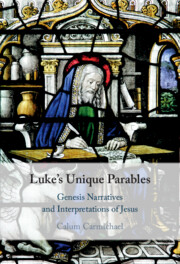Refine search
Actions for selected content:
136 results
Introduction
-
- Book:
- Self-Made
- Published online:
- 30 October 2025
- Print publication:
- 30 October 2025, pp 1-9
-
- Chapter
- Export citation
Conspiracy Stories
-
- Journal:
- Canadian Journal of Philosophy , FirstView
- Published online by Cambridge University Press:
- 14 October 2025, pp. 1-19
-
- Article
-
- You have access
- Open access
- HTML
- Export citation
Chapter 11 - Leaders, Artists, Innovators
- from Part II - The New Psychology of Intergroup Relations
-
- Book:
- The Psychology of System Change and Resistance to Change
- Published online:
- 23 September 2025
- Print publication:
- 09 October 2025, pp 220-251
-
- Chapter
- Export citation
Chapter 9 - Temporal Cycles and the Psychology of Time
- from Part II - The New Psychology of Intergroup Relations
-
- Book:
- The Psychology of System Change and Resistance to Change
- Published online:
- 23 September 2025
- Print publication:
- 09 October 2025, pp 185-200
-
- Chapter
- Export citation
Long shadow of the ‘maquis’: discursive practices surrounding Cameroon’s hidden war
-
- Journal:
- The Journal of Modern African Studies , First View
- Published online by Cambridge University Press:
- 07 October 2025, pp. 1-25
-
- Article
-
- You have access
- Open access
- HTML
- Export citation
Poverty in Judgecraft: New Narratives through the Language of Equality – CORRIGENDUM
-
- Journal:
- German Law Journal ,
- Published online by Cambridge University Press:
- 02 October 2025, p. 1
-
- Article
-
- You have access
- Open access
- HTML
- Export citation
Becoming a Muhacir: Writings and Narratives of Displacement in the Late Ottoman Empire
-
- Journal:
- International Journal of Middle East Studies , First View
- Published online by Cambridge University Press:
- 25 September 2025, pp. 1-20
-
- Article
-
- You have access
- Open access
- HTML
- Export citation

From First Job to Career
- Research and Narratives
-
- Published online:
- 19 September 2025
- Print publication:
- 21 August 2025
Chapter 11 - “Kurdistan Is My Country”
- from Part I - Storying-to-Learn: How Stories-that-Matter Help Us Appreciate Social Work in Action
-
-
- Book:
- Learning through Social Work Stories-That-Matter
- Published online:
- 28 August 2025
- Print publication:
- 11 September 2025, pp 150-169
-
- Chapter
- Export citation
Chapter 19 - Former Refugee Youth in Rural Northern Norway
- from Part I - Storying-to-Learn: How Stories-that-Matter Help Us Appreciate Social Work in Action
-
-
- Book:
- Learning through Social Work Stories-That-Matter
- Published online:
- 28 August 2025
- Print publication:
- 11 September 2025, pp 266-285
-
- Chapter
- Export citation
The meaning of ‘acceptance’ of a psychiatric diagnosis: qualitative study of illness narratives with review of the literature
-
- Journal:
- BJPsych Open / Volume 11 / Issue 5 / September 2025
- Published online by Cambridge University Press:
- 04 September 2025, e194
-
- Article
-
- You have access
- Open access
- HTML
- Export citation
Poverty in Judgecraft: New Narratives through the Language of Equality
-
- Journal:
- German Law Journal / Volume 26 / Issue 2 / March 2025
- Published online by Cambridge University Press:
- 01 September 2025, pp. 170-197
-
- Article
-
- You have access
- Open access
- HTML
- Export citation
On the political consequences of local deliberative governance in China
-
- Journal:
- Political Science Research and Methods , First View
- Published online by Cambridge University Press:
- 27 August 2025, pp. 1-21
-
- Article
-
- You have access
- Open access
- HTML
- Export citation
Chapter II - First Job and Career Narratives
-
- Book:
- From First Job to Career
- Published online:
- 19 September 2025
- Print publication:
- 21 August 2025, pp 27-174
-
- Chapter
- Export citation
Introduction
-
- Book:
- From First Job to Career
- Published online:
- 19 September 2025
- Print publication:
- 21 August 2025, pp 1-4
-
- Chapter
- Export citation

Narratives of Sino-Middle Eastern Futures
- In the Eye of the Beholder
-
- Published online:
- 08 August 2025
- Print publication:
- 21 August 2025
-
- Element
-
- You have access
- Open access
- HTML
- Export citation
5 - Untold Narratives
- from Part II - Settlement Practices and Perspectives of Judges
-
- Book:
- Vanishing Legal Justice
- Published online:
- 20 March 2025
- Print publication:
- 03 April 2025, pp 99-114
-
- Chapter
- Export citation
Changes in referential production among Japanese-English bilingual returnee children: a five-year longitudinal study
-
- Journal:
- Bilingualism: Language and Cognition , First View
- Published online by Cambridge University Press:
- 18 March 2025, pp. 1-12
-
- Article
-
- You have access
- Open access
- HTML
- Export citation

Luke's Unique Parables
- Genesis Narratives and Interpretations of Jesus
-
- Published online:
- 28 February 2025
- Print publication:
- 06 March 2025
Tailoring Narratives on War in Ukraine: Cross-national Study of Sputnik News
-
- Journal:
- Nationalities Papers / Volume 53 / Issue 5 / September 2025
- Published online by Cambridge University Press:
- 07 February 2025, pp. 1077-1098
-
- Article
-
- You have access
- Open access
- HTML
- Export citation
